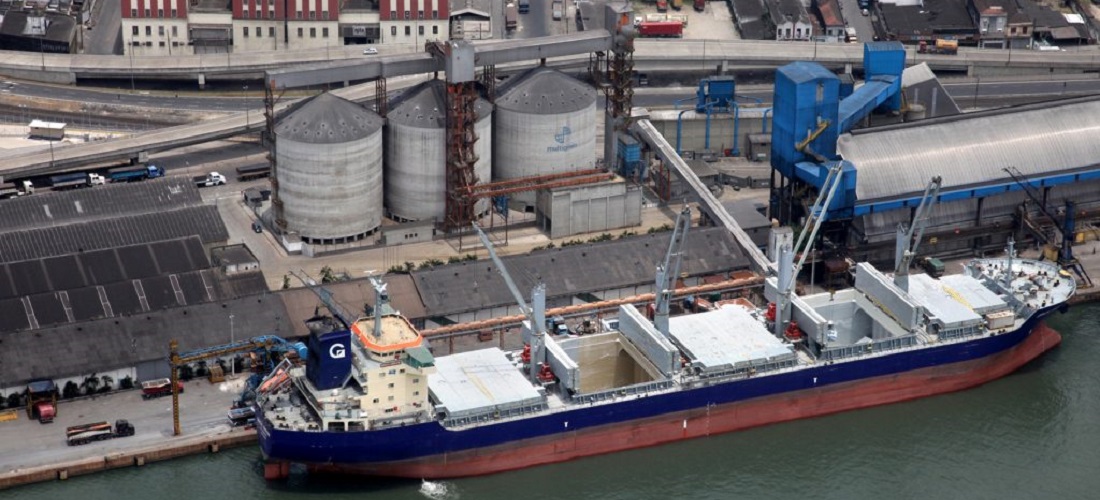
Agribusiness sustainability threatened by lack of space and infrastructure at the Port of Santos
Jul, 15, 2021 Posted by Ruth HollardWeek 202128
Santos is the main route for the sale of Brazilian agribusiness. It is also responsible for the import of necessary inputs for national production, one of the foundations of the national economy. However, operational bottlenecks, such as lack of space in terminals, and lack of infrastructure, including access difficulties, are warning signs for the sustainability of the business in the coming years.
“Arriving in Santos, we have difficulties connecting with the boarding terminals, the same difficulty that all other exporters have. And it makes us have to stop the train at a terminal and, from there, move by road, which makes exports more expensive. Often, the viability used for the cargo is lost because there is no way to deposit the cargo in the boarding terminal when the train is unloaded”, said the executive manager of International Logistics at JBS, Clóvis Wessling.
According to the executive, the Port of Santos is the port with the largest representation for the group in the country. Last year, a monthly average of 2,433 containers was handled at the Santos wharf.
However, for the export of animal protein, according to Wessling, there are issues that hinder or inhibit the growth of operations through the Port of Santos. The limited space in terminals and the low number of outlets for refrigerated containers are high on the list.
As a result, the JBS executive points out the impossibility of depositing cargo in advance, which creates a queue and delays in the delivery of containers.
“Growth at the Port of Santos has been constant since 2014, year after year, with an even greater projection. However, there are serious risks of creating operational bottlenecks and no longer having the capacity to flow as we would like in a port that, obviously, is closer to our production”, said the JBS executive.
Fertilizers
If commodity exports are important for the country and for the Port of Santos, imports of inputs needed for agribusiness are prominent in the national economy.
According to the Director of Direct Purchases at Yara International, Gustavo Zaitune, “It is very important for us to always look to Santos as one of the main ports, without a doubt, that will supply Brazil today and in the future, as production, unfortunately, grows little due to the competitive environment, the cost of natural gas, and some restrictions on the mineral reserve. We grow a lot with imports”.
On the other hand, for the executive, ensuring rail connections and taking advantage of all the spaces on the Santos wharf is essential to make it more competitive. One of these issues includes the offer of terminals for the movement of fertilizers in the Santos complex.
“The Development and Zoning Plan brings order to the organization of the port. Without a doubt, it contributes. We understand that there are some points of attention and we have to make sure that the Right Bank remains an alternative. It is, without a doubt, the escape valve for fertilizers”, said Gustavo Zaitune.
Terminal
The Port of Santos fails to transport part of the load of fertilizers from its primary hinterland due to lack of capacity, acknowledges the Santos Port Authority (SPA). For this reason, to reverse this scenario, SPA modeled a new terminal dedicated to the product – the STS 53, to be installed in Outerinhos. Studies on the new installation were sent to EPL (the Ministry of Infrastructure’s planning and logistics company) in May last year. SPA should qualify for the Investment Partnership Program (PPI) soon.
According to SPA, “at its full capacity, the terminal will help Santos expand its rail share from 31% to 70% for imported mineral bulk (fertilizers, salt, and others).”
Currently, the Port can operate 9.5 million tons of imported mineral bulk (fertilizers, salt, and others). With the planned investments, this capacity will increase by 74%, reaching 16.5 million tons. The issue of the lack of berths for fertilizer ships has been debated at SPA since 2019. That year, changes in the regulations of the port made it possible to operate fertilizers in idle stretches of the quay.
Source: The Tribune
To read the full original article, visit the link:
-
Ports and Terminals
Jun, 04, 2021
0
Ports of Paraná begins review of the port-zoning plan
-
Other Logistics
Jan, 15, 2019
0
ANTT goes ahead with Ferrogrão railway vote without consulting indigenous people
-
Trade Regulations
Feb, 04, 2022
0
Brazil cleared remote inspection of imported goods
-
Ports and Terminals
Mar, 18, 2020
0
Port of Santos decides to maintain activities after a meeting to review pandemic



